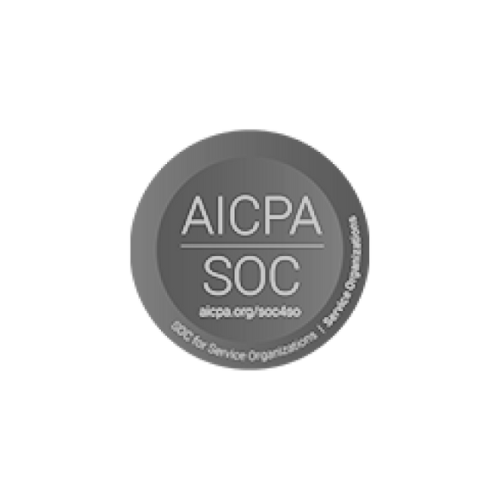Employee recognition is more than a gesture of appreciation; it’s a strategic tool that drives motivation, loyalty, and productivity within your organization.
Whether you lead a small team or oversee a large company, recognizing your employees’ efforts is essential to building a thriving workplace culture.
But what makes recognition so impactful, and how can you implement it effectively?
Why Employee Recognition Matters?
Boosts Morale and Motivation
Recognition helps to validate your employees’ hard work. It makes them feel valued and motivates them to perform at their best.
When employees know that their contributions matter – they feel a sense of pride and accomplishment.
Improves Retention Rates
A lack of recognition is a leading cause of employee turnover. By appreciating your team’s efforts, you create a positive work environment that encourages employees to stay longer.
Enhances Productivity
By acknowledging good work, you can inspire your employees to maintain or exceed their performance levels. It will also set a standard of excellence that others will strive to achieve.
Builds Trust and Loyalty
When employees feel recognized, they are more likely to trust you and the leadership team and remain loyal to the organization. This trust is essential for team cohesion and long-term success.
Encourages Collaboration
Recognition programs often emphasize teamwork. Rewarding collaborative efforts shows your employees the value of working together toward shared goals.
Aligns with Organizational Values
Publicly recognizing behaviors that align with company values reinforces those principles throughout your team.
This helps build a culture where everyone understands and works toward the same mission.
Attracts Top Talent
Companies known for valuing their employees attract high-caliber candidates. Recognition can be a key differentiator in a competitive talent market.
Risks of Neglecting Employee Recognition
Decreased Engagement
Employees who feel unnoticed or undervalued are less likely to engage with their work, leading to lower productivity.
Higher Turnover Costs
Losing employees due to a lack of recognition can result in high costs related to recruiting, hiring, and training replacements.
Damaged Team Morale
When recognition is absent, frustration and dissatisfaction can spread throughout the team, affecting overall morale.
Limited Innovation
Employees who feel undervalued are less likely to contribute creative ideas or take initiative, stalling innovation.
Weakened Leadership Credibility
Leaders who fail to acknowledge contributions risk being perceived as out of touch or indifferent, eroding their credibility.
Inequality in Perception
Inconsistent or biased recognition practices can create resentment among employees, damaging workplace relationships.
Misalignment with Company Goals
Without recognition tied to organizational values, employees may focus on tasks that don’t support key objectives.
Types of Employee Recognition
Here are the various types of recognitions that you can choose from for your organization:
Formal Recognition Programs
These include structured initiatives like:
- Employee of the Month awards
- Annual ceremonies
- Company-wide acknowledgment events
Informal Recognition
Day-to-day gestures, such as a simple “thank you” or a shoutout during a team meeting, go a long way in making your employees feel appreciated.
Peer-to-Peer Recognition
Allow employees to recognize each other – this will foster a sense of camaraderie and will reinforce teamwork.
Milestone Recognition
Celebrating work anniversaries, project completions, or other key achievements highlights long-term commitment and dedication.
Performance-Based Rewards
You can also consider providing bonuses, promotions, or tangible rewards for exceptional performance – this motivates employees to exceed expectations.
How to Implement Effective Employee Recognition?
Make It Personal
Generic recognition can feel insincere. You should tailor your acknowledgment to the individual by highlighting specific contributions and their impact.
Tie Recognition to Values
Ensure that recognition aligns with your company’s core values. This reinforces what the organization stands for and sets a clear standard for employees.
Be Timely
Recognition is most effective when it happens close to the event or accomplishment. Delays can dilute the message and reduce its impact.
Encourage Peer Recognition
Empower your employees to recognize their colleagues’ efforts. This creates a culture where appreciation flows at all levels.
Use Multiple Channels
Combine public acknowledgment, such as announcements during meetings, with private gestures like personalized notes or one-on-one conversations.
Incorporate Technology
Leverage digital platforms to streamline recognition. Apps and software can track achievements, send reminders, and allow employees to share appreciation across teams.
Seek Employee Input
Survey your team to understand what type of recognition resonates with them. Tailoring programs to their preferences increases engagement.
Partner with Experts When Needed
Consider consulting a background verification company or HR specialist to ensure your recognition programs are fair, unbiased, and aligned with industry standards.
Measuring the Success of Recognition Programs
There are several ways you can find out if the employee recognition program at your organization is successful. Here are some of them:
Employee Feedback
Regular surveys and feedback sessions can help you gauge whether employees feel valued and satisfied with the recognition they receive.
Retention Rates
A noticeable decrease in turnover can indicate the effectiveness of your recognition initiatives.
Engagement Metrics
Increased participation in company activities and higher productivity levels often signal improved employee morale.
Alignment with Business Goals
Assess whether recognition is driving behaviors that contribute to your company’s objectives, such as innovation, collaboration, or customer satisfaction.
Common Pitfalls to Avoid
Overlooking Consistency
Inconsistent recognition can lead to perceptions of favoritism and undermine trust.
Focusing Solely on Monetary Rewards
While financial incentives are important, a balance of intrinsic and extrinsic rewards creates a more holistic recognition strategy.
Ignoring Quiet Contributors
Recognizing only high-profile employees may demotivate quieter team members who also make valuable contributions.
Overcomplicating Programs
Complicated processes can discourage participation. Keep recognition programs simple and accessible.
Conclusion
Employee recognition is not just a “nice to have”; it’s a cornerstone of organizational success.
It boosts morale, reduces turnover, and fosters a workplace culture where employees feel valued and engaged.
By implementing thoughtful and consistent recognition programs, you can create an environment where employees are motivated to perform at their best.
Recognition is more than a pat on the back – it’s an investment in your team’s success and your organization’s future.
















